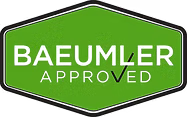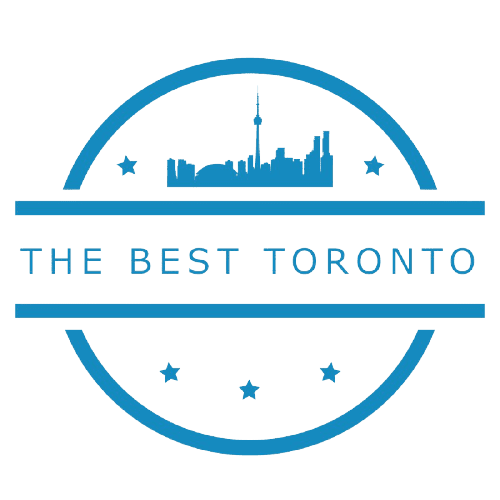Toronto homeowners need attic mold inspection because mold starts growing within 48 hours of moisture exposure. Attics face a higher risk of mold outbreaks when condensation builds up from rain, moisture, ice, and heat. Our company’s mold removal requests in Toronto have increased over the last several years.
Our team’s 17 years of experience in mold inspection and removal services help us address your home’s mold concerns. Toronto’s certified mold removal costs between $4.00 and $6.00 per square foot. Many companies provide free assessments to check the problem.
Your attic’s yearly mold inspections are a great way to get information about potential issues before they become severe. This blog covers all you need to know about attic mold inspection in Toronto. It includes early warning signs, certified testing, and affordable removal methods.
Why Attic Mold is a Growing Concern in Toronto
Toronto homeowners deal with unique challenges when their attics develop mold. Mold growth in Toronto attics isn’t just possible—it’s a constant threat that needs regular monitoring and proactive checks.
Toronto’s climate and attic conditions
The city faces extreme weather patterns all year that create perfect conditions for mold to thrive. Toronto has hot, humid summers and cold, wet winters. This creates a perfect environment for moisture problems in attics.
Cold winter months create a huge temperature difference between warm indoor air and cold attic surfaces. This causes condensation when these air masses meet. Ice dams also tend to form during winter and force water under shingles into attic spaces.
Summer brings its own problems. The city’s high humidity makes it hard for moisture to evaporate. The hot summer sun heats roofing materials and creates thermal cycling that pushes moisture into attic spaces. The changing seasons and high humidity make Toronto’s attics extremely prone to mold growth.
Why is it most common for mold to grow in attics?
Attics top the list as the most common places for mold to grow, and with good reason, too. We found these areas filled with materials. They included wood beams, cardboard boxes, and some types of insulation.
The insulation can easily soak up moisture. These materials become perfect food sources for mold.
Most homeowners rarely check their attics. Water damage signs often go unnoticed until stains or musty smells appear in other parts of the house. Mold can grow hidden for years, which makes cleanup much harder and can get pricey by the time someone finds it.
Common signs of attic mold
Finding attic mold early can save Toronto homeowners from significant issues. Here are the warning signs to watch:
- Visible growth: Look for black, green, white, or gray spots. These may appear as fuzzy patches or powdery substances. You can find them on wood surfaces, insulation, or stored items.
- Musty odours: Distinct earthy or mildew-like smells that get stronger in the attic area
- Water stains: Discoloured patterns on roof decking, rafters, or ceiling materials
- Health reactions: More sneezing, runny nose, itchy eyes, coughing, or breathing problems, especially near the attic
- Material deterioration: Wood surfaces that show decay, softening, or structural damage
The best time to check your attic is following heavy rain, snowmelt, or between seasons when mold loves to grow quickly.
How to Inspect for Mold in the Attic
Attic inspections for mold need careful attention and a step-by-step approach. You should check regularly since mold can start growing just 48 hours after moisture exposure.
Visual signs to look for
Start by examining your attic space carefully. Here’s what you need to watch for:
- Visible mold growth that appears as clusters of black, gray-brown, or dark greenish spots with slimy or fuzzy textures on wood surfaces.
- Musty odours that smell like rotting leaves or wet cardboard
- Water stains or discolouration on your attic’s ceiling, walls, or rafters
- Peeling paint or bubbling on upper surfaces
- Wood deterioration that feels soft when you walk on it or shows visible decay
These visual signs help spot potential problems, but mold often grows in hidden spots. If you smell musty odours without seeing any signs, mold might exist inside the walls or ceiling cavities.
Using moisture meters and thermal imaging
Professional tools can substantially boost your ability to detect mold:
Moisture meters tell you how damp materials like wood and drywall are. Wood with readings above 17% shows a high risk for mold growth. These devices help you find moisture sources before mold becomes visible.
Thermal imaging cameras spot temperature differences you can’t see with your eyes. These advanced tools identify cool areas that might have moisture. Expert inspectors can check your attic without going inside. They can see if temperature differences between the attic and the house matter.
Thermal imaging can’t see through walls but detects surface temperature changes from moisture. This technology lets you check large areas quickly without surface damage.
When to call attic mold inspection specialists
DIY attic inspections mold removal help, but some situations need professional expertise:
- You find visible mold growth covering large areas
- After water damage from roof leaks or flooding
- Musty odours persist without visible mold
- Your family has unexplained breathing problems
Certified inspectors use specialized equipment like industrial-grade moisture meters, thermal cameras, and hygrometers to check indoor humidity. They know how to take samples safely without spreading contamination. Certified experts can also find the mechanisms of moisture problems—crucial to stop mold from coming back after cleanup.
What Happens During a Certified Attic Mold Inspection
Certified attic mold inspection starts when technicians arrive at your home. Understanding this process will help you know what happens in each phase of this important assessment.
Original assessment and air quality testing Toronto
Qualified technicians begin with a complete visual assessment of your attic space. They look for visible signs of moisture, staining, and active mold growth.
Their special equipment includes thermal imaging cameras. These cameras reveal hidden moisture.
They also use thermal hygrometers to measure temperature and humidity levels. These tools help them find issues you can’t see with your eyes.
The team checks ventilation and airflow. They inspect soffits, baffles, exhaust fans, and roof vents. This helps them understand why issues occur.
Sampling and lab analysis
After completing the visual assessment, technicians collect air samples with specialized pumps that pull air through mold spore traps. Every proper test needs at least two samples – one from your attic and another from outside as a “control” sample to match for results. An accredited third-party laboratory analyzes these samples, usually providing results within 2-4 days. This unbiased testing shows whether mold spore levels are normal, moderate, or high.
Reporting and next steps
The lab analyzes the data, leading to a detailed report that outlines any air quality issues found. Professional inspectors will walk you through the findings and recommend specific solutions based on the results. When they confirm mold, they create a complete remediation plan that tackles both the mold and why it happens. This systematic approach will give a lasting solution while preventing future outbreaks through targeted moisture control measures.
Attic Mold Removal and Prevention Strategies
Spotting mold in your attic requires quick action. A professional cleanup provides you with the safest and quickest way to eliminate attic mold for good.
Containment and removal process
The right mold removal starts with containment barriers. Professional teams protect nearby furniture and floors to stop mold from spreading.
Expert cleaners use media blasting techniques, like ice blasting or soda blasting. These methods effectively remove all mold. The team will replace any contaminated insulation as needed. Safety remains crucial, so workers must wear protective gear, including safety glasses, N95 respirators, and disposable gloves.
Fixing ventilation and insulation issues
Your best defence against future mold lies in proper ventilation. The cleanup team checks your soffit vents’ insulation, which often blocks over time. The combination of ridge and soffit vents creates the best airflow patterns.
Your attic’s insulation should keep temperatures close to outside conditions and prevent condensation. The temperature gap between inside and outside should stay around 20 degrees Fahrenheit.
Ongoing maintenance to prevent recurrence
Keeping track of your attic’s humidity levels after cleanup makes sense. You should check for moisture problems right after heavy rains.
A well-maintained roof prevents even small leaks that mold loves. Make sure your bathroom and kitchen vents blow air outside instead of into the attic. Regular seasonal checks help you spot condensation issues early.
Contact CPR24 Restoration for a Certified Attic Mold Inspection!
Toronto’s unique climate makes attic mold a major headache for homeowners. Our seasonal weather patterns create perfect conditions that let mold thrive in attic spaces. Most people ignore their attics until problems get pricey and health risks emerge.
Quick action on mold problems can save thousands in cleanup costs. Certified mold removal runs between $4.00 – $6.00 per square foot. Many companies offer free checks of your attic, which makes it easy to track problems before paying for repairs.
DIY checks help spot obvious signs like visible growth, water stains, and musty smells. Certified attic mold inspections near me are a great way to get deeper details with special tools like moisture meters and thermal imaging. These tools can find hidden moisture problems before mold takes over.
The cleanup process fixes both the mold and what caused it. Your attic needs proper airflow and insulation to stop mold from coming back. Think of certifiedl mold removal as money well spent rather than just another bill.
Homeowners who dealt with attic mold can cut their risk by a lot if they use the prevention tips we covered. Regular checks, especially after bad weather, help catch problems early. Without doubt, taking care of your attic now protects your home’s structure and your family’s health for years ahead.
FAQs
Q1. How much does a certified attic mold inspection typically cost in Toronto?
The cost of a professional mold inspection in Toronto can change. It usually ranges from CAD 350 to CAD 550. Some companies offer free initial assessments to determine the extent of the problem.
Q2. What are the signs that I might have mold in my attic?
Common signs of attic mold are a musty smell, visible black, green, or gray spots, and water stains. You may also notice unexplained breathing problems in people living in the house.
Q3. Can I inspect my attic for mold myself, or should I hire a professional?
You can do a simple visual check for mold and water stains. However, professional inspectors use special tools. They have moisture meters and thermal cameras. These tools can find hidden moisture problems before mold starts growing.
Q4. How much does attic mold removal typically cost?
The cost of attic mold removal in Toronto usually ranges from CAD 4.00 to CAD 6.00 per square foot. For small and easy-to-reach areas, it may cost around CAD 1,400. However, if there is a lot of mold in hard-to-reach attics, it could cost up to CAD 5,600.
Q5. What steps can I take to prevent mold from recurring in my attic after removal?
To stop mold from coming back, make sure your attic has good ventilation. Keep insulation at the right level. Check for leaks or moisture problems often, especially after heavy rain. Ensure that bathroom fans and kitchen vents blow air outside, not into the attic.








